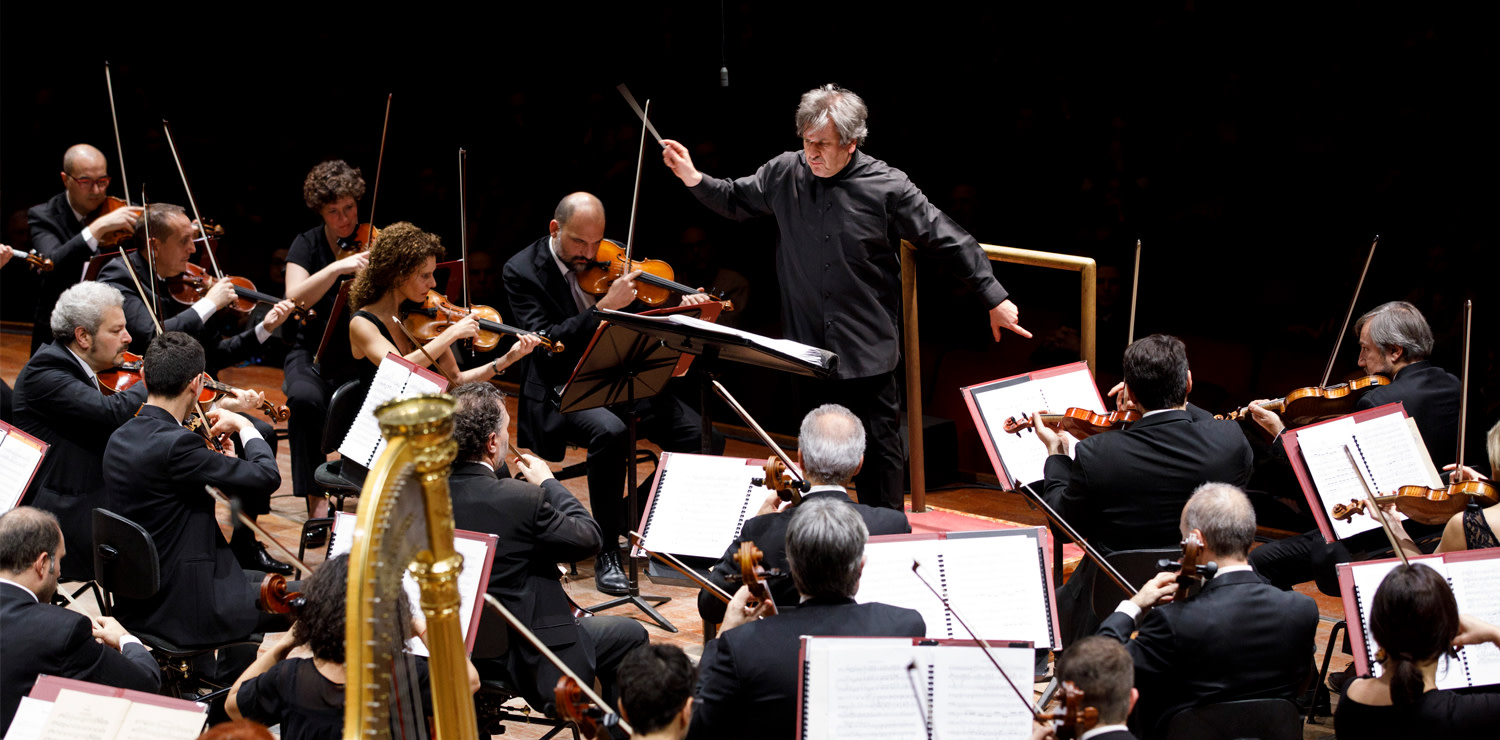Sir Antonio Pappano, il direttore di Santa Cecilia racconta il suo rapporto con la capitale
Leading the National Orchestra of Santa Cecilia since 2005, our meeting
At the helm of the Orchestra Nazionale di Santa Cecilia since 2005, Antonio Pappano divides his time between Rome and London, where he also directs the Royal Opera House. Knighted for his services to music, Pappano was raised in New York by Italian parents who first emigrated from the province of Benevento to Epping, UK, where the future director was born. He worked for several years as Daniel Baremboim’s assistant before becoming one of the top orchestra directors of our time, beloved not only by the public but also by the musicians themselves.
What does it mean to direct an orchestra?
Being an orchestra director means always being surrounded by a world of colour and insane energy. It’s a privilege, I can’t describe it any other way; it’s a very enviable position. But it’s a big responsibility to give direction to all this energy.
The key ingredient?
Trust. Without it, conducting an orchestra can become one of the most unsettling things in the world.
What’s the special quality that sets the Santa Cecilia Orchestra apart?
It’s colouristic, warm, sensual and theatrical.
How have the tones and sounds evolved since you began conducting?
The sound was already there when I arrived, but together we worked to find a hierarchical balance between the parts, moment by moment. This is also a kind of life lesson because I have to listen to what others say.
What kind of relationship do you have with orchestra maestri?
Having Italian roots, there’s an unspoken bond, kind of chemical in a way. I always try to challenge them not only as a form of training, but also to help them grow in their music. It’s a rapport based on respect, but also on that feeling of “we can do this!”.
It’s said that you are one of the most beloved orchestra directors. Why do you think that is?
My approach is based on work, professionalism and trust. I know that they give their all and they know that I do too. This is wonderful, and I feel very fortunate.
You’ve been with Santa Cecilia since 2005. What was it like to return to your roots?
I didn’t know much about Italy before accepting this job, and I had little knowledge about Italian music, so everything was a discovery for me. But in addition to the beauty and charm of all things Italy, the greatest gift has been meeting incredible people who have become close, dear friends. My wife and I live a nomadic life, always travelling around the world, so knowing that there are people I can call “friends” is something beautiful and very important to us.
Where do you live in Rome?
After a few years on via del Corso, we moved close to the Auditorium, in the Parioli neighbourhood. It’s only a seven-minute walk to the stage!
Your favourite stroll through centre?
I love the area behind the Pantheon, around Hotel Minerva. Getting a hot chocolate from Caffè Sant’Eustachio is particularly relaxing. I’m attracted to the combination of modern and ancient of the Ara Pacis, and I appreciate the courage it took to do create it. I also think the Auditorium is beautiful. I have a real passion for the Galleria Borghese as well. Anna Coliva [ed. the director of the Borghese] does an excellent job there. She allows me to come in some Mondays when the museum is closed so I can contemplate all the beauty in silence.
If you could interpret Rome through music, what would your orchestra play?
This is very easy because we have Ottorino Respighi, who, through his Fountains, Pines of Rome and Roman Festivals, was able to expertly capture the atmosphere of this magical city. Conducting this music with my orchestra, which we’ve performed before, was a wonderful experience.
Your next concert will be Brukner’s Symphony No. 8. What is the spirit of this piece?
It’s my favourite, though I’m not sure why. Perhaps because I’m Catholic and it’s a piece of Catholic music, not because there are words, but because it’s a sort of religious and sensual rite. It’s a cathedral in musical form.









